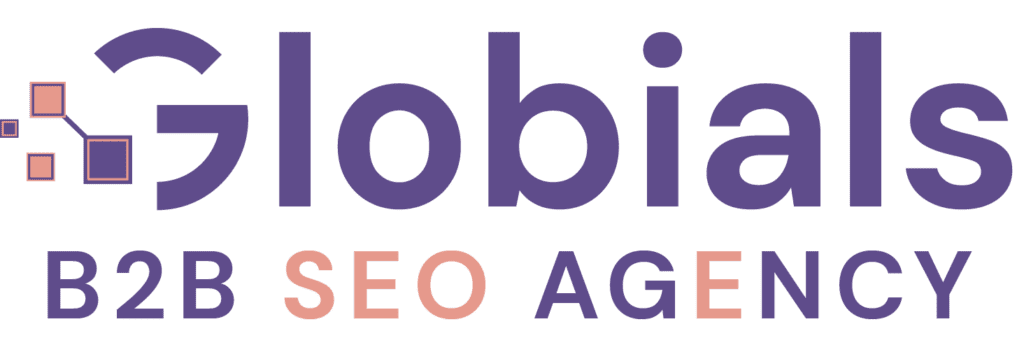In the present digital world, having a strong online presence is essential for individuals and organizations. WordPress is one of the most well-liked website creation tools. WordPress has established itself as the platform for novice and seasoned web developers due to its user-friendly interface and many customization possibilities. However, more than simply creating a website is required to succeed online. To drive traffic and increase visibility, you need to master the art of WordPress SEO. We will lead you through the procedure of optimizing your WordPress website for search engines in this step-by-step manual, assisting you in raising your ranks and drawing in more visitors.
Understanding the Importance of WordPress SEO
What is SEO?
Optimizing your website to increase its exposure and ranks in search engine results is known as SEO or search engine optimization. The higher your website ranks, the more organic traffic it will likely receive from search engines like Google, Bing, and Yahoo.
Why is SEO important for your WordPress website?
Implementing WordPress SEO strategies on your WordPress website is essential for several reasons:
1. Increased visibility: By optimizing your website for search engines, you increase the chances of it appearing on the first page of search results. This, in turn, exposes your website to a larger audience and improves its visibility.
2. Higher organic traffic: Most online experiences start with a search engine. By appearing higher in search results, you attract more organic traffic to your website, reducing your reliance on paid advertising.
3. Enhanced user experience: SEO practices such as improving website speed, optimizing navigation, and creating high-quality content contribute to a better user experience. This encourages visitors to stay longer on your site, reducing bounce rates and increasing engagement.
4. Long-term sustainability: SEO strategies provide long-term benefits, unlike paid advertising. Once you establish a solid SEO foundation, your website can maintain its rankings and visibility over time, resulting in sustainable traffic and potential leads.
Keyword Research

Researching keywords is one of the main elements of SEO. Keywords are the phrases or terms people use when searching for information or products online. You may improve the content of your website to match search queries better and improve your chances of appearing higher in search results by focusing on relevant keywords.
The significance of keywords
Selecting the appropriate keywords is essential for your SEO efforts to succeed. Here’s why keywords are significant:
1. Relevance: Targeting relevant keywords ensures that your website appears in front of the right audience—people actively searching for your products, services, or information.
2. Competition: Keywords vary in terms of competition. Some keywords may have high competition, making it challenging to rank them. By conducting thorough keyword research, you can identify less competitive yet relevant keywords, giving you a better chance of ranking higher.
3.User intent: Keywords reveal user intent, which helps you understand what your target audience is looking for. Your chances of bringing quality visitors to your website are increased if you connect your content with user intent and offer helpful information and answers.
Tools for keyword research
Several tools can assist you in finding the right keywords for your WordPress website:
1. Google Keyword Planner: This free tool from Google allows you to explore keywords, get search volume data, and discover new keyword ideas.
2. SEMrush: A comprehensive SEO tool that provides keyword research, competition analysis, and other valuable insights.
3. Moz Keyword Explorer: Moz offers a powerful keyword research tool that provides data on keyword difficulty, search volume, and organic click-through rates.
4. Ahrefs: A popular SEO tool that offers robust keyword research capabilities, including keyword difficulty analysis, search volume data, and competitor research.
When conducting keyword research, focus on finding relevant keywords for your website, have a reasonable search volume, and are aligned with user intent.
Optimizing On-Page Elements

Optimizing on-page elements is essential for improving your WordPress website’s SEO. By paying attention to various elements on your web pages, you can enhance their visibility and relevance to search engines. Let’s examine some important on-page optimization strategies:
Creating compelling page titles
Page titles, also known as title tags, are crucial for SEO. They serve as the main headline for search engine results and influence users’ decisions to click on your website. When creating page titles, consider the following best practices:
- Use relevant keywords: Incorporate targeted keywords naturally into your page titles, ensuring they accurately reflect the page’s content.
- Keep it concise: Aim for page titles that are 50-60 characters long to avoid truncation in search engine results.
- Write for users: While optimizing for search engines is important, prioritize creating compelling titles that engage users and entice them to click.
Writing meta descriptions
Meta descriptions summarise your web page’s content in search engine results. Well-written meta descriptions may greatly increase click-through rates even if they have no direct effect on rankings. When developing meta descriptions, keep the following suggestions in mind:
- Be succinct: To guarantee that your meta descriptions are completely displayed in search results, keep them between 150 and 160 characters.
- Include relevant keywords: Incorporate targeted keywords naturally into your meta descriptions to attract users’ attention and demonstrate relevance.
- Encourage action: Craft compelling meta descriptions that encourage users to click through to your website by highlighting unique selling points or offering a solution to their problem.
Optimizing headings and subheadings
H1, H2, H3, and so on indicate headings and subheadings, which are essential for organizing and structuring your material. Search engines use headings to understand the hierarchy and context of your webpage. Follow these best practices for optimizing headings and subheadings:
- Use H1 for main titles: Each webpage should have a unique H1 heading that concisely summarizes its main topic or purpose.
- Utilize H2-H6 for subheadings: Use subheadings to divide your content into sections and subsections. Ensure they are relevant and descriptive and help readers navigate through the content easily.
- Include keywords: Incorporate relevant keywords naturally into your headings and subheadings to signal their importance to search engines.
Using proper URL structures
The user experience and SEO are both impacted by URL structure. Consider the following tips for creating SEO-friendly URLs:
- Keep it concise: Shorter URLs are generally easier to read and understand. Aim for URLs that accurately reflect the page’s content without unnecessary parameters or complex structures.
- Use hyphens: Separate words in your URLs using hyphens (-) rather than underscores or other characters. Hyphens are more search-engine-friendly and help with readability.
- Include targeted keywords: Whenever possible, include relevant keywords in your URLs to provide additional context to search engines.
Incorporating internal and external links
Linking internally and externally is crucial for both SEO and user experience. Internal links help search engines discover and navigate your website, while external links provide credibility and context. Consider the following tips for effective linking:
- Internal linking: Include relevant internal links within your content to guide users to related pages on your website. This aids search engines in comprehending your site’s organization and hierarchy.
- External linking: to reliable and pertinent sources where applicable. This adds value to your content and signals that you provide valuable resources to search engines.
Optimizing images and alt tags
Images play a vital role in enhancing user experience and engagement. To make your photos WordPress SEO-friendly, adhere to these rules:
- Choose the right file format: Use JPEG or PNG formats for images, depending on the type of image and its intended purpose.
- Compress images: Compress your images to reduce file size and improve website loading speed. Several tools are available for this purpose, such as ImageOptim and TinyPNG.
- Optimize alt tags: Alt tags provide alternative text for images when they cannot be displayed. Include descriptive and keyword-rich alt tags to help search engines understand the content and context of your images.
These on-page optimization strategies will help your WordPress website become more visible, relevant, and user-friendly, boosting its search engine ranks and increasing organic traffic.
Crafting High-Quality Content

When it comes to WordPress SEO, content is king. High-quality and valuable content attracts and engages visitors and plays a crucial role in search engine rankings. Follow these tips for crafting compelling content:
- Recognize who your audience is: Understand the requirements, interests, and problems of your target audience by researching them. Make material that speaks to their particular issues and offers helpful solutions.
- Write engaging articles: Use a conversational tone and an informal writing style to make your content more relatable and accessible to readers. Keep your paragraphs concise, use headings and subheadings to break up the text, and incorporate bullet points and numbered lists to enhance readability.
- Utilize keywords in your content: Incorporate targeted keywords naturally into your content. Avoid overloading your content with keywords since this might harm user experience and search engine rankings. Focus on providing valuable information and maintaining a natural flow in your writing.
- Avoid duplicate content: Duplicate content refers to content appearing on multiple pages within your website or other websites. Search engines penalize duplicate content, so ensure that your content is unique and original. Utilize plagiarism detection software to ensure that your writing is original.
Enhancing Website Speed and Performance

Website speed and performance are crucial factors that impact user experience and influence search engine rankings. Follow these steps to enhance your WordPress website’s speed and performance:
- Minimize CSS and JavaScript files: Reduce the size and number of CSS and JavaScript files by minifying and combining them. Minification removes unnecessary characters and spaces while combining files reduces the number of HTTP requests.
- Optimize images and multimedia: Compress images without compromising quality using tools like Kraken.io or Smush. Utilise picture file types and sizes that are acceptable. Lazy loading can also be implemented to load images only when visible on the screen.
- Enable caching and compression: Utilize caching plugins like W3 Total Cache or WP Super Cache to store static versions of your web pages, reducing the load on the server and improving load times. Enable GZIP compression to reduce file sizes further and speed up page loading.
Mobile-Friendly Optimization
Given the growing popularity of mobile devices, it’s crucial to optimize your WordPress website for mobile users. Make sure your website is responsive by following these steps:
- Designing a responsive website: Use a responsive theme or template that automatically adjusts the layout and content based on the user’s device. This ensures your website looks and functions well on desktop and mobile screens.
- Optimizing for mobile speed: Optimize your website’s performance for mobile devices by reducing file sizes, leveraging browser caching, and minimizing heavy scripts. Test your website’s mobile speed using tools like Google PageSpeed Insights or GTmetrix and make necessary optimizations.
Technical SEO

Technical SEO focuses on optimizing the technical aspects of your WordPress website to improve its visibility in search engine rankings. Consider the following technical WordPress SEO practices:
- Understanding robots.txt and sitemap.xml: A robots.txt file tells search engines which pages to crawl and which to exclude. Sitemap.xml maps your website’s structure and helps search engines index your content effectively. Ensure that both files are correctly configured and updated.
- Implementing structured data: Structured data markup provides search engines with additional information about your content, enabling them to display rich snippets in search results. Implement structured data using Schema.org markup for enhanced visibility.
- Redirects and canonical URLs: Implement proper redirects for pages that have moved or no longer exist. Use canonical URLs to specify the preferred version of a webpage when multiple versions with similar content exist.
User Experience and Navigation
Providing an excellent user experience and easy navigation on your WordPress website is essential for users and search engines. Consider these tips:
- Creating intuitive navigation menus: Structure your navigation menus logically and make them easily accessible. Use clear and descriptive labels for menu items to guide visitors through your website effortlessly.
- Improving website usability: Ensure your website is easy to use and navigate. Optimize your forms, improve readability with proper typography, and ensure all interactive elements function correctly.
- Reducing bounce rates: A high bounce rate indicates that visitors leave your website quickly without engaging with your content. To reduce bounce rates, provide engaging and relevant content, improve page load times, and enhance user experience.
Utilizing SEO Plugins

WordPress SEO offers several SEO plugins that simplify optimization and provide valuable insights. Consider these well-known plugins:
- Yoast SEO: Yoast SEO provides a comprehensive set of features, including keyword optimization, XML sitemap generation, content analysis, and more. Configure the plugin according to your WordPress SEO needs and follow its recommendations for each page or post.
- All-in-one SEO: All-in-One SEO Pack includes many optimization tools, including creating XML sitemaps, improving title and meta descriptions, and integrating social media.
- Rank Math: Rank Math is a powerful WordPress SEO plugin that offers advanced features such as rich snippets, keyword suggestions, redirection management, and more. It provides a user-friendly interface suitable for beginners and advanced users alike.
Choose an SEO plugin that aligns with your specific needs and follow their guidelines to optimize your WordPress website effectively.
Tracking and Analyzing Performance
Tracking and analyzing the performance of your WordPress website is crucial for understanding its strengths and areas for improvement. Follow these steps to monitor your website’s performance effectively:
- Setting up Google Analytics: Sign up for a Google Analytics account and integrate it with your WordPress website. This potent tool offers insightful data on your website’s traffic, user activity, and conversion rates.
- Monitoring website traffic and user behaviour: Use Google Analytics to track key metrics such as page views, unique visitors, bounce rates, time on page, and conversion rates. Analyze this data to identify trends, understand user behaviour, and make informed decisions to improve your website’s performance.
- Making data-driven improvements: Utilize the insights gathered from analytics data to make data-driven improvements to your website. Create content that connects with your audience, identify pages with high bounce rates, and optimize them to increase conversion rates.
Optimizing for Local SEO
Local SEO optimization is essential for firms aiming to reach local consumers. Follow these steps to enhance your WordPress website’s visibility in local search results:
- Local SEO strategies: Research local keywords and phrases relevant to your business and incorporate them into your content. Create location-specific landing pages and optimize them for local search intent.
- Creating and optimizing Google My Business listing: Claim and optimize your Google My Business (GMB) listing. Give complete and current information, such as your company name, phone number, website address, and operating hours. Ask consumers to post reviews on your GMB listing to boost your local WordPress SEO.
- Generating positive reviews and ratings: Positive reviews and ratings enhance your online reputation and influence your local search rankings. Encourage satisfied customers to leave reviews on platforms like Google, Yelp, and Facebook.
Building Quality Backlinks
Building quality backlinks from reputable websites is essential for improving your WordPress website’s authority and search engine rankings. Follow these strategies to acquire valuable backlinks:
- The importance of backlinks: Backlinks are like “votes” from other websites, signalling to search engines that your content is valuable and trustworthy. Focus on earning backlinks from authoritative and relevant websites within your industry.
- Techniques for acquiring backlinks: Reach out to influencers, industry experts, and other website owners to promote your content and request backlinks. Guest blogging on reputable websites is another effective strategy for acquiring backlinks.
- Guest blogging and outreach strategies: Identify websites that accept guest posts in your niche and offer them high-quality, unique content. Ensure that your guest posts provide value to readers and include a relevant and contextual link back to your website.
Social Media Integration

Leveraging social media for WordPress SEO can boost your WordPress website’s visibility and traffic. Follow these steps to integrate social media into your SEO strategy:
- Leveraging social media for SEO: Create profiles on popular social media platforms such as Facebook, Twitter, LinkedIn, and Instagram. Engage your audience by sharing your material frequently. Encourage social sharing and engagement on your website by incorporating social sharing buttons.
- Integrating social sharing buttons: Add social sharing buttons to your blog posts and webpages, making it easy for visitors to share your content on their social media profiles. This can increase your content’s reach, attract visitors, and earn valuable backlinks.
- Encouraging user engagement: Actively engage with your social media followers by responding to comments, messages, and mentions. To build a feeling of community around your brand, promote conversations. Engaged social media followers are likelier to share your content and visit your website.
Staying Up-to-Date with WordPress SEO Trends
SEO constantly evolves, and staying up-to-date with the latest trends and best practices is crucial. Follow these strategies to stay informed:
- The ever-changing SEO landscape: Regularly read industry blogs, follow reputable SEO experts, and join relevant communities to stay updated with the latest WordPress SEO trends, algorithm updates, and industry news.
- Following industry experts and blogs: Identify authoritative WordPress SEO experts and blogs that provide valuable insights and reliable information. Sign up for their newsletters and follow them on social media to get frequent updates.
- Adapting your strategies accordingly: As you stay informed about the latest WordPress SEO trends, be prepared to adapt your strategies and tactics accordingly. Experiment with new techniques, tools, and approaches to optimize your WordPress website effectively.
By following these strategies, you can stay ahead of the curve and ensure that your WordPress website remains optimized for search engines and attracts organic traffic.
Conclusion
Mastering WordPress SEO is a continuous journey that requires dedication and ongoing effort. You will acquire the skills and resources required to search engine optimize your WordPress website by following the step-by-step instructions in this tutorial. Remember to prioritize producing high-quality content, using applicable keywords, optimizing on-page features, and remaining current with WordPress SEO developments. Regularly monitor your website’s performance, make data-driven improvements, and adapt your strategies to align with the ever-changing SEO landscape.





